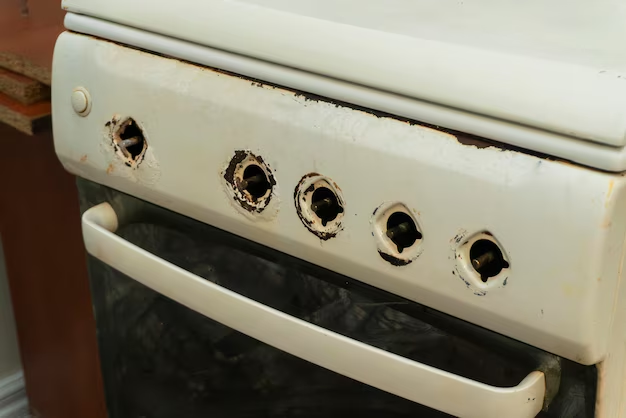Is Your Refrigerator on the Fritz? Recognizing the Telltale Signs
A refrigerator is one of those household appliances you might take for granted—until it stops working. As the silent sentinel of your kitchen, it plays a crucial role in keeping food fresh and extending the shelf life of your groceries. However, like any machine, refrigerators have a finite lifespan. Knowing the early warning signs that your refrigerator is on its last legs can save you from the inconvenience and potential food waste that sudden failures can entail. In this article, we’ll explore those signs and provide guidance on what steps you can take next.
📉 Recognizing the Early Warning Signs
Inconsistent Temperatures
Fluctuating temperatures inside your fridge can indicate that something is amiss. If your food is frequently spoiling before the expiration date or you're finding ice crystals forming on your produce, these could be signs of poor temperature regulation. This inconsistency often stems from a faulty thermostat or worn-out door seals allowing cold air to escape.
Strange Noises
A bit of noise from your refrigerator is perfectly normal, but being aware of unusual sounds is key. If you notice grinding, squealing, or banging sounds, it might be time to take notice. These noises could suggest issues with the fan motor, compressor, or cooling system.
Excessive Condensation
If your refrigerator looks like it's sweating, with excessive moisture on the interior walls or pooling at the bottom, it might indicate a problem with the cooling mechanism. Excess condensation can also be a sign that the door seals are not functioning properly, causing cold air to leak which impairs efficiency.
Motor Running Hot
The back of your fridge should feel warm, but it should not be overheating. If the walls are unusually hot, this could be an indicator that the motor is working excessively hard to maintain cool temperatures. Overheating often results from faulty coils or a failing motor that may soon give up completely.
🔍 Diagnosing Specific Issues
Faulty Thermostat
A malfunctioning thermostat can disrupt temperature consistency. To test, set the thermostat to a new level and monitor the temperature changes with a refrigerator thermometer. If there's no change, you might need a professional to replace it.
Door Seal Failure
Over time, the magnetic seals around the refrigerator door can wear out or become misaligned. An easy test is the "dollar bill test": close a dollar bill in the door and try to pull it out. If it slides out easily, it's time for a seal replacement.
Compressor and Motor Issues
If your appliance is louder than usual, this might reflect wear and tear in the compressor or motor. These components are crucial for the cooling function, and a dramatic increase in noise often suggests they are struggling to operate efficiently.
Blocked or Frozen Vents
Make sure the vents inside your refrigerator aren't blocked by food items. In some cases, vents can become frozen, blocking cold air flow. A thorough defrosting might be necessary if you notice ice buildup, which can improve ventilation and cooling performance.
✔️ Quick Summary for Troubleshooting
Here's a quick checklist to help identify potential issues:
Temperature Fluctuations 🥶
- Check thermostat settings.
- Inspect door seals.
Unusual Noises 🛠️
- Listen for unusual sounds.
- Examine the compressor and motor.
Excessive Condensation 💧
- Inspect for worn door gaskets.
Overheating 🚨
- Ensure clearance for back vents.
- Assess motor workload.
💡 Proactive Maintenance Tips
Regular Cleaning
Dust Coils Regularly: Dust and dirt on cooling coils can cause the motor to overwork. Clean coils every six months to maintain efficiency.
Maintain Optimal Organization
Avoid overstuffing your refrigerator. Allowing space for air circulation can significantly enhance cooling efficiency and reduce strain on the appliance.
Defrost Periodically
If your refrigerator doesn’t come with an auto-defrost feature, doing it manually when ice buildup occurs can prevent further issues.
Monitor Energy Usage
Noticeable spikes in your energy bill? This can pinpoint inefficiencies in your refrigerator’s operation, indicating that it's time for a replacement if repairs don't mitigate the issue.
📅 Planning for Repair or Replacement
Assess Repair Viability
If your refrigerator is under eight years old, it might be more economical to repair rather than replace it. Older appliances, however, are usually more expensive to fix than replace.
Environmentally Friendly Disposal
When it’s time for a new refrigerator, dispose of your old one responsibly. Many retailers offer recycling programs, which ensure that hazardous materials are processed properly.
Consider Energy Efficiency
When purchasing a new refrigerator, consider energy-efficient models, which can lead to significant savings on energy bills over time, and contribute to environmentally friendly living.
✨ Final Takeaway
Understanding these warning signs and taking preemptive action can extend the lifespan of your refrigerator or help you make more informed decisions about repair or replacement. While some issues can be simple DIY fixes, more complicated problems might necessitate professional assistance. Being attentive to your refrigerator’s performance not only ensures your food remains safe and fresh, but also helps in maintaining a smoothly functioning kitchen environment. Stay informed, and you'll keep your cool even if your refrigerator doesn't!
